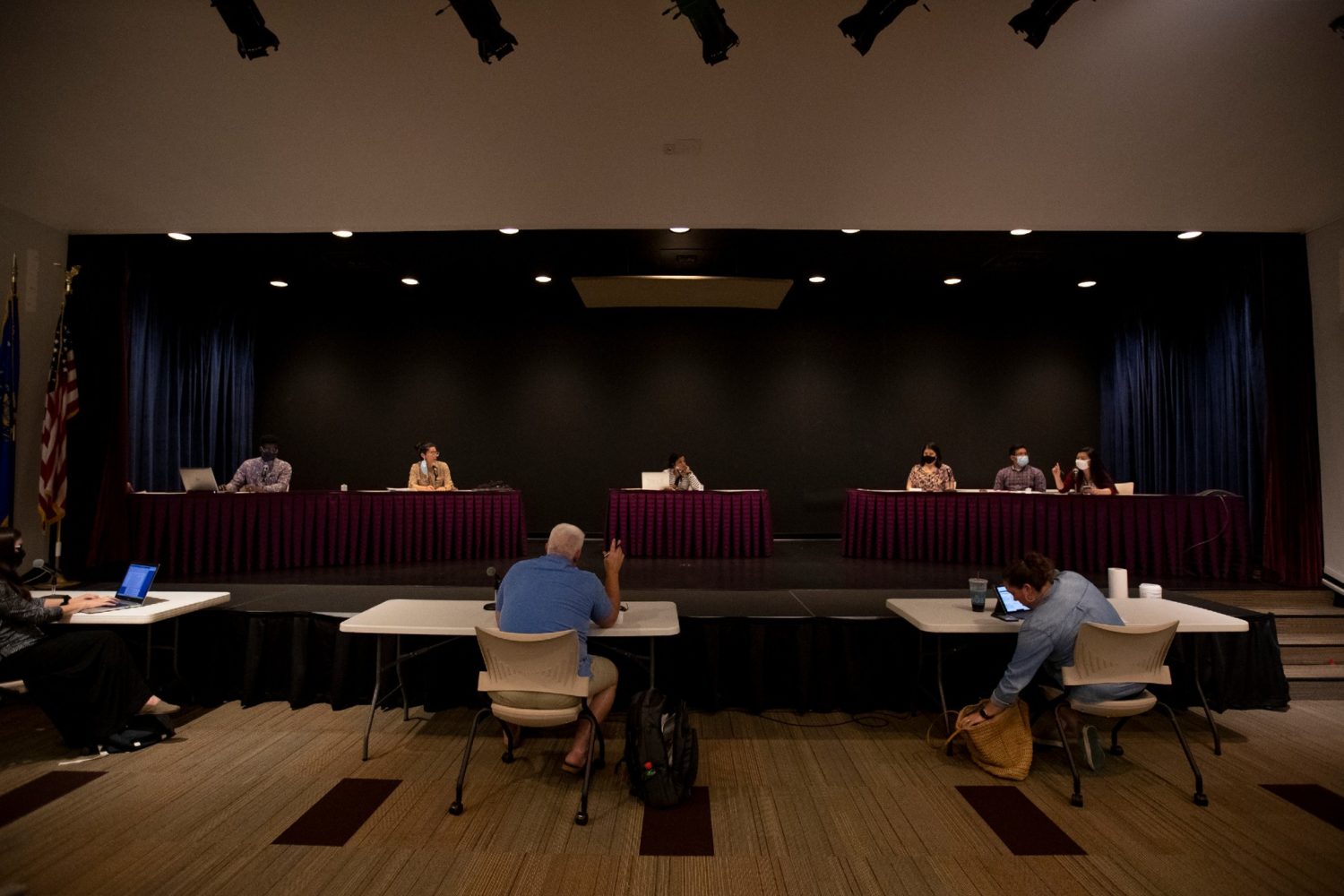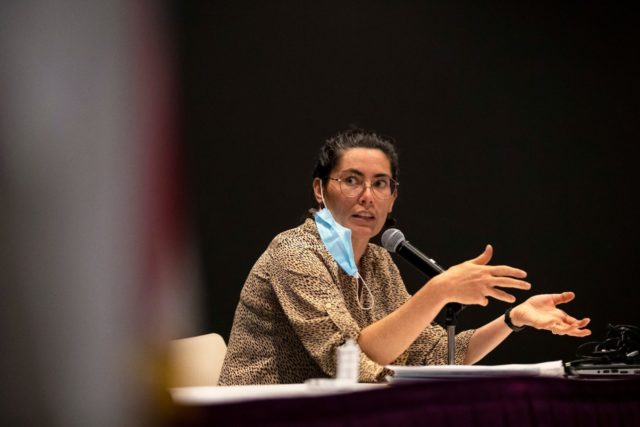
This piece was produced for the NEW News Lab, a collaboration to support local journalism is Northeast Wisconsin.
The Brown County Central Library auditorium was filled with big ideas on Monday, May 24. Brown County’s Racial Equity Ad Hoc Committee convened for a second time this Monday to explore ways to address racial inequality in Northeast Wisconsin. Although the room was mostly filled with committee members and county officials, the eagerness to get the ball rolling on racial equity was apparent.
In February, Brown County passed a resolution to declare racism a public health crisis. Part of the resolution also called for a committee to form policy and program recommendations to address the crisis.
The committee, which is led by Chairperson Dr. Pooja Bambha-Arora, includes Vice Chair Rashad Cobb, Secretary Louise Padron, Carina Abrego-Koch, Jose Villa, Tara Yang, County Supervisor Megan Borchardt, County Supervisor Amanda Chu and County Board Chair Patrick Buckley.
“We’re just making a headstart,” said Bambha-Arora, who has lived in Brown County for 6 years and specializes in education and culturally responsive teaching. “We do want to approach it with a broader understanding of what we’re looking at in terms of…jobs, employment housing and all these social determinants that come under addressing racism as a public health crisis.”
The group will have a long road ahead, given two years to create a report of recommendations for the County Board, meeting on the fourth Monday of every month. Although members of the committee say that they have adequate support from the County Board and the community, some residents feel the declaration is unwarranted.
During the public comment section of the meeting, County Supervisor Joan Brusky read a letter from one of her constituents who said the effort to establish racial equity in the county was “immoral, tyrannical and impossible to achieve.”
“I don’t believe racism is a crisis. It isn’t endemic and America is the least racist place on earth,” the letter went on. Brusky said she does not agree with the comment made by her constituent.
Other community members expressed their support and pushed the committee to be clear on their intentions moving forward.
“I’m here because I’m interested in your goals. What is your goal? What do you hope to accomplish?” said Green Bay East High School’s former principal Ginny Streckenbach. “I want to be a part of that”
The two-year ad hoc committee is tasked with developing an advisory report for the County Board of Supervisors on how to move forward. The focal points of that advisory report are still taking shape. County Supervisor Cassandra Erickson gave a presentation on the Government Alliance on Race and Equity (GARE), a network of local governments working to achieve racial equity. Erikson advocated for the committee to apply for GARE membership, which would offer tools and resources for addressing inequality as a governmental body.

“If we’re not doing our own internal work as an institution to take care of those things in-house and wrestle with those really complicated nuances of how racism presents, then we’re not gonna have the deep impact in the community to affect systemic change,” said County Supervisor Amanda Chu.
Erickson said that membership in GARE should make the process looking inward more efficient and focused.
“We want to make sure that we are developing Diversity, Equity and Inclusion (DEI) training effectively but we’re also offering the support and resources for those conversations to continue after employees finish their DEI training for the county,” she said.
Brown County is the 4th largest county in the state with over 200,000 residents. In 2019, the county was 3.4 percent Asian, 3.4 percent American Indian, 3 percent Black and 9 percent Hispanic/Latinx, according to Census data.
In August of 2020, the city of Green Bay partnered with Wello, a local non-profit organization centered on Health and Well-being, to pass its own declaration on racism as a public health crisis. The resolution, which was authored by Wello, was signed by 19 other organizations, according to Wello’s site.
“I hope to focus on some of the institutional ways that the county as an organization can undergo transformational change to decrease racial disparities, “ said Chu. “There is an organizational responsibility to do its best job at addressing racial inequity.”
Wello’s Community Health and Wellbeing Survey in 2019 surveyed 1,395 residents in Brown County. The report cited that the white residents in the county live 28 years longer on average than Black and and Hispanic residents. Wello also found that people of color residing in Brown County reported lower well-being across all categories in the survey.
A 2018 study of community health needs conducted by Aurora BayCare Medical Center found that in Brown County. In 2015, the infant mortality rate for Black people in Brown County was 13.6 per every 1,000 births, over two times higher than the statewide rate of 5.7 deaths per 1,000 for all Wisconsinites.
In 2016, the rate of injury related hospitalizations was highest among Native Americans. Brown county residents who endure opioid related hospitalizations are most likely to be Black or Native American.
“This is the long game,” Erickson said.




























